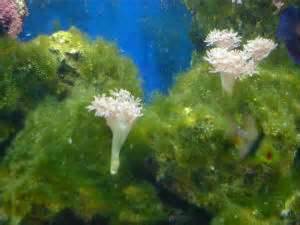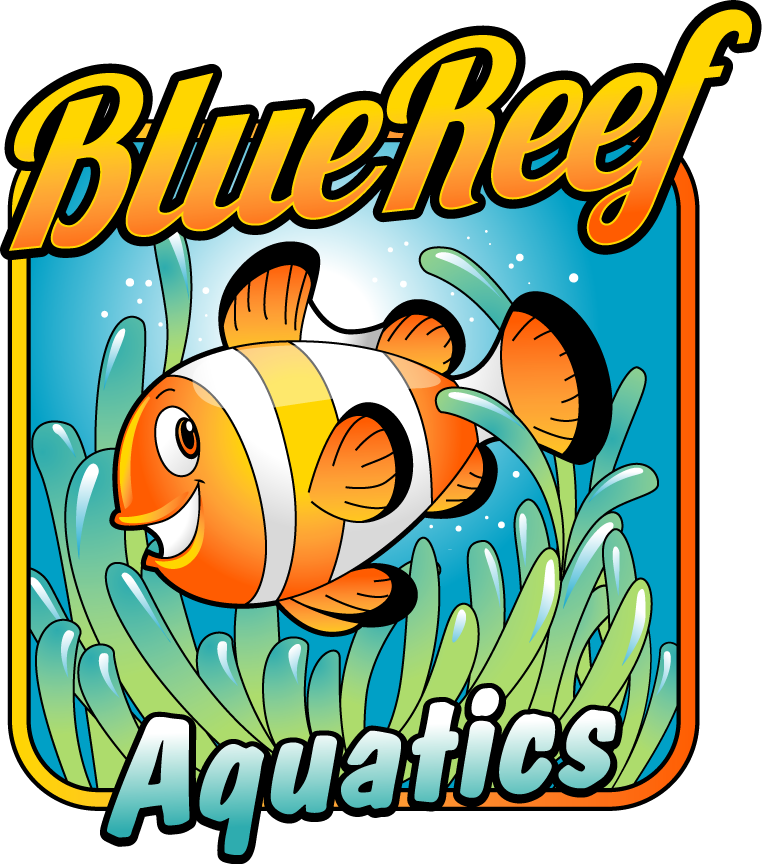
At one time or another, the marine aquarist will undoubtedly be faced with a nuisance algae problem. With proper aquarium set up and management, nuisance algae can be kept under control or even eliminated. Nuisance algae come in many forms, the most common types are brown diatoms, hair algae, and red slime algae. Left unchecked, these algae can ruin the beauty of a marine aquarium and smother the corals and live rock, leaving the Aquarist frustrated and disappointed.
COMMON CAUSES OF UNWANTED ALGAE IN MARINE AQUARIUMS
- Nitrogen bi-products such as ammonia, nitrite, & nitrate build-up
- Low oxygen / elevated C02 levels, caused by poor water circulation/filtration
- Phosphate Build-Up
- Aging light bulbs or incorrect lighting spectrum
- Ambient room lighting
- Uncured live rock
- Inhabitant die off
- High temperatures
- Over-feeding, Over-stocking, Large size fish relative to water volume
- Poor quality fish foods with low protein, creating excessive waste
- Frozen foods containing liquids, such as un-strained frozen brine shrimp
- Lack of proper set-up, i.e.- lack of/or poorly functioning protein skimmer
- Use of tap water, which often contains unwanted algae-causing nutrients, such as phosphate & silicate
Ammonia & Nitrite are common in newly set-up aquariums, and will break down over time as the tank cycles. Live sand, cured live rock, & bio-filtration such as a wet-dry filter containing bio-balls will all help to cycle a new aquarium and reduce the ammonia & nitrite build-up. Liquid bacteria supplements may also be added to help establish the bio-filter more quickly. Adding cured live rock is like having an instant bio-filter. During cycling, minimal light should be used as the nitrogen bi-products will lead to rapid and massive algae blooms. Once the ammonia and nitrite levels are 0 (zero), start increasing the lighting photo-period gradually, and add snails at this time to control diatom algae blooms, common in newly cycled aquaria.
Nitrate build-up begins once the tank cycles, since nitrate is the bi-product of ammonia and nitrite break-down. Keeping nitrate levels low is imperative to a low-algae aquarium. Common causes of nitrate build-up include lack of routine water changes, overfeeding, dead or decaying organisms in the aquarium, cannister filters, sponge filters, poor or lack of protein-skimming, and dirty pre-filters. To keep nitrate levels low, we recommend against canister-type filtration which leads to high nitrate levels and algae problems. In our experience, aquariums with canister filtration almost always have high nitrate levels and algae problems. We also recommend over-sized protein skimmers to remove the dissolved organic waste, which will help keep nitrate levels low. Recently a surge of carbon-based bacterial liquid products have appeared on the market; these liquids are efficient at controlling nitrate as well. Lastly, a granular nitrate absorber may be used to remove nitrates by placing the product in the filter. Keeping nitrates low is imperative to reducing nuisance algae. If you have any questions about controlling nitrate or proper aquarium set-up techniques and recommendations, contact Blue Reef Aquatics for more information.
Phosphate control is also an important solution for reducing and eliminating algae in marine aquaria. Common sources of phosphate include unfiltered source water, fish foods, dead or decaying organisms, and some liquid aquarium additives. The most common source of phosphate is tap water, we recommend using reverse-osmosis de-ionized water as your source and make-up water. Tap water usually contains unwanted minerals, chemicals, and pollutants, ultimately leading to an unsightly amount of nuisance algae. Blue Reef has phosphate-free RO/DI water available, filters to remove phosphate from your tap water, and products to reduce phosphate build-up in your aquarium. A reliable phosphate test kit is important to give the aquarist vital information about tank and source-water phosphate levels. Blue Reef also offers free water testing to our purchasing customers, so bring your water in for a phosphate test today. If the phosphate level in your aquarium is too high, try some granular phosphate remover, a phosphate-lowering filter pad, or some liquid phosphate-consuming bacteria supplements. In extreme cases or for larger aquariums, install a phosphate reactor onto your sump with a phosphate-reducing media. With our 20+ years experience, we can solve almost any phosphate problem you may be having with your aquarium.
Helping to Eliminate Aquarium Algae with Nature’s critters “Clean Up Crews”
Blue Reef Aquatics offers many natural algae consumers that can be placed into the reef or marine aquarium to help control algae. We try to stock most of these critters at all times. Check with us for the proper algae-eating critters for your particular aquarium. Often a mix of various assorted types of snails and hermits works best. It’s a good idea to keep a few empty shells in the tank so the hermits can use them as they grow, otherwise they are known to go after snails in order to acquire larger shells for themselves.
To eliminate algae such as diatoms (brown, dusty film) and green algae from the aquarium glass & rock surfaces, snails of the following species are best.
- Mexican Turbo Snails (larger size, fast moving)
- Margarita snails (smaller size, great glass cleaners)
- Astrea Snails (small to medium size, work well in groups to remove algae)
- Trochus Snails (fast moving, very efficient reef safe cleaner)
To eliminate stringy, hairy, or wispy algae from rocks
- Sea Urchins – scrape with their underside and clean mainly the live rock
- Emerald Crabs & Juvenile Sally Lite Foot Crabs pick at filamentous (stringy, hairy) algae, Emerald Crabs also eat Valonia, or green bubble algae
- Sea Hare -Voracious hair algae cleaners. One Sea Hare can clean a 75 gallon tank of hair algae in about a week.
To clean the sand, & rock crevices of detritus, to keep the sand fresh & clean looking
- Nassarius Snails- live in the sand, eat leftovers, keep the sand aerated and prevent clumping.
- Sand Sifting starfish – approximately 1 per 40-50 gallons of tank volume- buries in the sand- eats organics from the sand bed
- Cerith snails- juveniles tend to stay on the glass and rocks, larger varieties can bury themselves in the sand
- Sea cucumbers- sand filtering varieties ingest waste and build-up within the live sand bed
- Brittle & serpent Stars- eat leftovers off the sand surface, help control detritus. Nocturnal [caution-large species can eat smaller fish]
- Bumble Bee Snails (stay very small, great for nano tanks)- great at controlling detritus and organic matter in rock crevices
- Reef safe Hermit Crabs- Small zebra reef hermits, Mexican reef hermits, blue leg hermits, scarlet hermits etc.. Not only do they eat leftovers, but the constantly stir the sand surface by walking across it. Most will also eat filamentous and hairy algae too.
- Conch – Reef safe sand cleaners that tend to move back and forth at the surface, like a reef bulldozer- sculpting and cleaning the sand surface to keep it clean looking. Rarely leaves the sand bed. Not for rock or glass cleaning.
